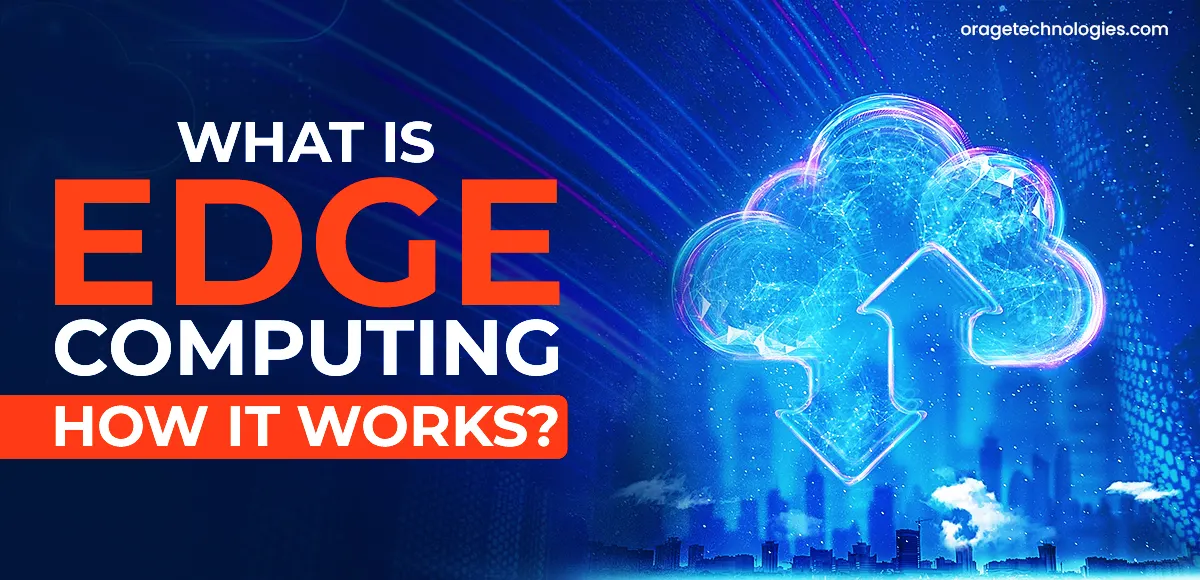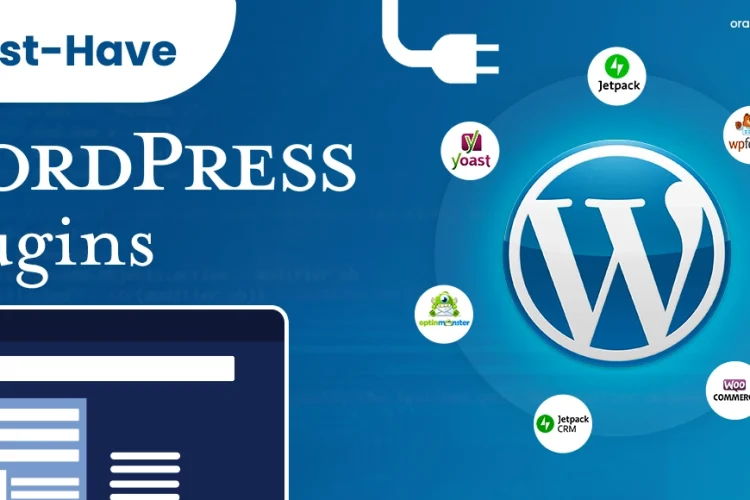
Divya Stuti, with over 5 years of experience in Digital Marketing & Content Writing, has a knack for turning complex Marketing strategies, trends, and jargon...
Say hello to a revolutionized way of data and resource integration with a new technology called “Edge Computing.”
Computing paradigms and resource location play a vital role in collecting data, and of course, data centres and the everyday internet are not enough to support its flow in the real world.
Problems such as Bandwidth limitations, latency hustles, and unexpected web interferences can result in undesirable outcomes. To overcome these, Businesses are responding through the use of edge architecture.
However, the main concern is that many people in the business and the IT industry are unaware of it. But you may not worry if you are one of those. This article will cover topics to help you understand the depth of Edge Architecture.
What Is Edge Computing?
Edge computing is a new computer functionality comprising various networks and devices at or near the user. It includes processing and integrating data at its originating place. This improves processing speed and volumes, leading to enhanced results in real-time.
There are many advantages of edge computation over traditional models. Here, an on-premise data center powers the computing that helps companies improve and manage their physical assets.
Unlike the traditional computing method, it takes less time, is efficient, and results in greater data collection. With the help of edge architecture, businesses can create new interactive and enhance the overall human experiences. Some used examples of edge include self-driving cars, autonomous robots, intelligent equipment data, and automated retail.
However, these uses still do not answer why is edge computing important?
Given that, here is its functional architecture:-
How Does Edge Computing Work?
Let us pay a little attention to its functional mechanism:-
- It is entirely based on “location.” It is very different from traditional computing, where the data is moved across a WAN (for example–the internet) at a client endpoint.
- In traditional computing, the data is stored and worked upon by an enterprise application through a corporate LAN, such as the Internet. After this, the results are then conveyed to the client.
- This method is time-consuming, encouraging IT industrialists to shift focus from the central data centre to edge computing. Here, the storage and computing resources are moved to the point where the data is generated.
- Edge computing works by shifting the data centre closer to the data.
- In Edge, data storage and servers where the data is often require more effort to operate on the remote LAN. In most cases, the computing gear is attached to a shield to protect the gear from extremes of temperature.
- Edge architecture processing is normally done by analyzing the data stream to search for business intelligence. After this, the results are sent back to the principal data centre.
Why Is Edge Computing Important?
Edge computing has changed the way industries process data. Today, most of the computing is done at the under’s endpoint, whether hospitals, factories, or retail locations.
It results in the critical processing of the most sensitive data. It powers systems that require reliable functionality and safety.
Any industry requires solutions with low latency that do not need a network connection. The exciting edge architecture transforms business across every industry and function.
Benefits of Edge Computing
Given that, here are some of its benefits:-
1. Improve performance and safety
Performance and Safety are one of the core business processes. It can help businesses improve by ensuring forever availability and rapid data processing.
2. Reduced latency
In traditional computing, latency is high, which results in time consumption. Edge computing, on the other hand, processes data closer to the source, reducing latency and enabling on-spot decision-making. This can benefit applications like smart grids, autonomous vehicles, and industrial IoT.
3. Improved user experience
Edge computing improves user experience by eliminating the need for data transfer. This fastens the processing time and reduces latency, on the other hand.
4. Improved security and privacy
Edge computing is more secure than traditional computing as it enables cloud-based solutions that are safe and independent.
5. Reduced costs
Last but not least is a reduction in the internet and data costs.
What Are The Uses Of Edge Computing?
Now that we have learned what edge computing is, its importance, and its benefits, it is time to highlight some of its uses.
Given that, here are some of its uses:-
1. Internet of Things (IoT) devices
Some IoT devices, such as smart thermostats, cameras, and industrial sensors, locally produce data and do not send it to the cloud.
2. Industrial automation and control systems
Some industrial automation, security, and control systems require low latency and high reliability.
3. Predictive maintenance
Predictive maintenance involves data analytics to detect any error when a machine fails.
4. City traffic management
City traffic management involves optimizing public transport frequency, lane usage, and self-reliant car flows.
5. Smart home IoT devices
Some smart home devices and IoT gadgets also use Edge to improve performance and security.
6. Education
Edge also enhances the education sector by improving network speed and reducing latency.
7. More efficient caching
Edge can run code on a CDN edge network of any application. It can customize how content is fetched for user efficiency.
8. Medical monitoring devices
Edge powers some medical monitoring devices to respond in real-time without waiting for cloud server instructions.
9. Video conferencing
Live video conferencing requires more bandwidth. Therefore, moving backend processes closer to the source of the video can decrease lag and latency.
Some other use cases of Edge Computing
- Autonomous vehicles
- Smart cities
- Stronger security
- Healthcare
- Manufacturing and industrial processes
- Virtual and augmented reality
- Enhanced workplace safety
- Streaming services and content delivery
How Edge Computing Will Drive Cloud Computing?
Edge is the future of the cloud with its revolutionized methods and quick data processing. But what catches our attention the most is how edge computing will drive cloud computing. Is there a connection between the two? Does cloud computing depend on Edge?
Worry not! We’ll try to answer all your questions.
Edge is the future of cloud computing. Significant development of cloud infrastructure allows organizations to analyze data without catalyzing any traditional data center. Some ways Edge can drive cloud computing:-
Greater bandwidth efficiency
Edge drives local data processing and analysis while reducing the amount of data being sent to the cloud. This lowers data transmission costs and fastens the processing.
Real-time responsiveness
It uses data generated at the site of the user, enabling quick and real-time responsiveness.
Reduced data transmission costs
Edge computing can control sensitive data and reduce the costs of data transmission to the cloud.
Greater agility
Various Edge-to-cloud platforms provide organizations the flexibility to respond quickly to clients and step on market opportunities.
In short, Edge computing processes are time-sensitive data that require quick responses. On the other hand, cloud computing is used to process data that is not time-driven. People prefer Edge over Cloud in distant locations, with little or no connectivity to a centralized location.
Edge vs. Cloud computing
Here is a small table that signifies how edge is the future of cloud:-
| Edge Computing | Cloud Computing |
| In edge computing, data storage, analytical, and computational devices are brought closer to data sources. | Cloud computers have their own mechanism and working sources that help process non-time-driven data. |
| It can outperform cloud-based systems by increasing responsiveness and boosting the functionality of the applications hosted on edge computers. | Its services are on demand and can be accessed by the user itself. This means it is easy to use, and even a vast volume of computing resources can be accessed through self-service. |
| It is more ideal than cloud platforms for applications that need quick responses for safety and efficiency. | Cloud platforms are easy to access, allowing development and agile creation of new applications. |
| Edge networks operate in a more dynamic condition. It requires strong infrastructure to ensure robust connections. | In the cloud, companies may readily scale data storage, network, and processing through an existing cloud computing subscription. |
| Some latency may be introduced in node-to-node communication, decelerating scaling operations. | Scaling is usually fast in the cloud and brings zero downtime or disruption. |
| Edge systems can produce client data by using analytical tools and AI-powered mechanisms. This improves operational efficiency and leads to heightened productivity. | It requires setting hardware and software for on-site data centres. This improves the IT workforce, allowing space for higher-value tasks. |
The Future of Cloud: Edge Computing with Other Technologies
Edge computing, when combined with other technologies, produces an enormous amount of data. It leverages innovation and gives scope for quick and real-time responses. Given that, here is how it leads innovation, combined with other technologies:-
1. 5G
5G enhances the implementation of edge by delivering smooth transmission of necessary control messages for autonomous decision-making. This technology connects the edge with the backend, ensuring software-defined network configurations.
2. IoT
IoT-connected devices have data sources that should be protected in the cloud. An edge system will be placed around these data sources.
3. Containers
These provide a suitable development environment for application deployment. They can be installed with various hardware, regardless of device capabilities, settings, and configurations.
4. Service and data mesh
They open paths for deploying data and services spread across containers and data stores across the edge.
5. Software-defined networking
This allows users to arrange the layered networks. Furthermore, it makes customizing routing and bandwidth easy to understand edge device placement in the cloud.
6. Digital twin
Digital Twin arranges physical-to-digital and cloud-to-edge. It uses domain terms around assets and production lines for arranging data. It gives a better reasoning capability to software experts for acting on the edge.
Challenges of Edge Computing
Though this technology is one step forward in providing a multitude of benefits, there are still some challenges that IT experts have to deal with.
Given that, here are some of them commonly included in edge architecture:-
1. Limited capability
Indeed, deploying an edge infrastructure is effective, but the scope and purpose are highly limited. IT experts can possibly perform a specific purpose at a time using the available resources and few services.
2. Connectivity
Edge can overcome minor network limitations, but it requires some minimum connectivity level. It is challenging to design a system that supports poor connectivity while considering the consequences of lost connection.
3. Security
One thing that you should know is that IoT devices are not secure!
That is why designing a properly managed system based on advanced security policies is important. Some major providers serve secure IoT services, but it is not automatic when deploying an edge system.
4. Data lifecycles
Another challenge in Edge is maintaining the data lifecycle. Most of the flowing data is unnecessary, and essential details can expire quickly. Edge produces this in enormous amounts, which may not be utilized on time.
Some Other challenges include:-
- Network Bandwith
- Distributed Computing
- Latency
- Security
- Back-up
- Data Accumulation
- Control and Management
- Scality
At Last
Edge computing is not new, but many people were unaware of its applications, benefits, and importance in the real world. The recent technology curve has introduced it to IT professionals, and thus, new innovations are taking place.
FAQs
Ques: What Is Edge Computing?
Ans: Edge computing processes data near the user, enhancing speed and real-time results.
Ques: What Is The Benefit Of Edge Computing?
Ans: Some benefits of Edge Computing include:-
- Improve performance and safety
- Reduced latency
- Improve user experience
- Improved security and privacy
- Reduced costs
Ques: What is edge full form?
Ans: EDGE means Enhanced Data Rates for GSM Evolution. It is a digital technology that allows for improved data transfer rates.
Ques: Which technology is edge computing an extension of?
Ans: Edge computing is an extension of Cloud Computing Technology.
Also Read:
- What is Grok AI: A Rebellious AI or Your New AI Friend?
- Add Me To Search Guide: How To Create Google People Card
- Microsoft Copilot AI: Features, Versions, and Alternatives

Divya Stuti, with over 5 years of experience in Digital Marketing & Content Writing, has a knack for turning complex Marketing strategies, trends, and jargon into interesting and easy to digest blog posts. Whether she’s breaking down the SEO, Social Media or decoding campaigns, Divya knows how to make marketing feel exciting and easy to understand. Armed with a sharp eye for strategy and a storyteller’s instinct, she writes with clarity, creativity, and just the right dose of wit.
More Posts

